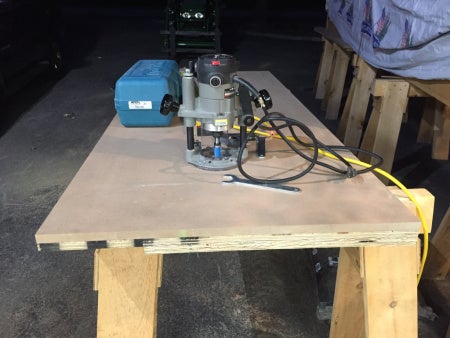
(5) Align: Use a rafter square to ensure that the pieces stay aligned. Clamp the pieces together using the rest of the benchtop pieces as a reference plane and a clamping block. Now bring four LVL pieces to a reliably flat work surface and apply glue on the face of each piece using a foam paint roller. (4) Glue: After planing, crosscut the pieces on a miter saw using a stop block to produce a consistent length.
#BUILD YOUR OWN ELECTRONIC WORKBENCH FREE#
Making an extremely light cut, feed each piece through a benchtop planer to produce a consistently flat and straight surface free of the waxy -protective coating that's applied to the joist at the mill. Next, carefully examine the face (the 3-inch width) of each piece and use a block plane to remove any small bumps where two pieces of veneer overlap. Each should have two neatly sawn and perfect edges. When you're done, select the best fourteen 3-inch-wide pieces. Always place the freshly sawn edge against the table-saw fence. (3) Planing: Rip the remaining LVL pieces to 3 inches wide. Why bother? This ripping method eliminates the factory edge and its minor imperfections. This produces six pieces of LVL with two sawn edges and no factory edge. Take each of the six pieces that you ripped, place the freshly sawn edge against the saw fence and feed the piece through the saw again. (2) Rip Again: Now shut the saw off and reset the fence to 3 inches. Use a woodworking square and a straightedge to check the ripped edge for square and flatness. Make one rip pass on each of the six pieces of LVL. Be sure to use a push stick as you near the end of the cut. (1) Start Cutting: Set the saw fence to 3 1⁄8 inches and make the first ripping pass. The bench is ambitious, but it can be built by a home craftsman who owns a small table saw and a benchtop planer. So I decided to build the bench out of construction lumber–clear Douglas fir, LVL joists (which are like large sheets of plywood) sawed into narrow strips then glued into a slab, and MDO, a form of plywood with a laminate surface. Popular Mechanics has covered the topic for more than a century, and has published books on building your own house.

It would be a bonus if, somehow, the bench reflected the magazine's association with house construction. But most important, it had to be functional. I wanted it to have crisp lines and pleasing proportions. When Popular Mechanics asked me to design and build a workbench as a project and as a centerpiece of its New York workshop and studio, I knew the bench had to reflect the brand and its no-nonsense heritage. Both can function about the same, but it's more likely the latter example will be a pleasure to use and to own. Master skills, get tool recommendations, and, most importantly, build something of your very own.Ī DIY workbench can be utilitarian and thrown together or it can be beautifully handcrafted. POP Projects is a collection of new and classic projects from more than a century of Popular Mechanics.


 0 kommentar(er)
0 kommentar(er)
